Gundam for Newcomers: Traits To Look Forward To
Mobile Suit Gundam began its run as an anime in the distant year of 1979, bringing the stinging political examination and touching coming-of-age story of Yoshiyuki Tomino to a beautiful hand-drawn animation style. Now, thirty-six years later, as Gundam Build Fighters Try rounds out another in a steady stream of promising, powerful space epics, any newcomers to the franchise may feel intimidated by the overwhelming amount of content, from the dozens of TV Series, to the additional supporting movies and universe-expanding OVAs, to the mangas and novel that detail events more clearly. However, for all of the innovation that each new series brings to the tried-and-true Mecha anime style, Gundam still holds some true-to-form and long standing tropes and traits, and each new series holds closely the promises of the original series, connecting with the struggles of a young adult coming into a troubled world. As such, no matter which series one chooses to begin with, here are some things a new viewer can expect in nearly every iteration of the franchise…
10. Believable Technology
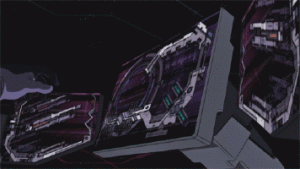
Most core Gundam entries are set in detailed universes with precise technological limitations and expectations. A careful observer of the anime can learn the precise locations of controls in the cockpit while watching an episode of Gundam, or look into understanding the complex Minovsky physics referenced several times as the centerpiece of most Gundam technology. In fact, much of Gundam technology is borrowed or adapted from the work of contemporary scientists, such as the O’Neill Cylinder, a integral part of space-faring technology in several series of Gundam.
This is no happenstance gimmick, and is an important part of the Gundam themes for two reasons. Firstly, technological limitations are meant to prevent Deus Ex Machina moments and create tension. When the protagonist realizes that his Gundam is almost out of fuel, the audience knows there isn’t likely to be a miraculous reserve tank or other intervention. This plot device is useful in its own right for furthering the story, but plays into the second, larger point of realistic technology: the focus of the show is on the ability of humans, and not on the capacity of technology. The anime wishes to dissect and examine the ability of individual characters to grow and overcome impossible odds for the betterment of all. As such, technology tends only to be capable of so much, and the characters of the show must compensate, either by creating something better or finding a non-technological solution.
There is a caveat to this particular note which must be explored further. Some notable exceptions exist to this rule, such as the Gundam designs of Mobile Fighter G Gundam, where the control scheme of each Gundam diverges sharply from the cockpit-style of previous entries. However, it must be noted that while Mobile Fighter G Gundam and other exceptions may include technology, such as the motion sensitive, virtual-reality controls of the eponymous Gundam, that couldn’t exist in reality, that technology will always be internally consistent to the anime, keeping with the two tenants described above. Believable technology is only a side-effect of great story writing, and not a centerpiece to the work.
9. Space Colonization as Socio-Cultural Critique
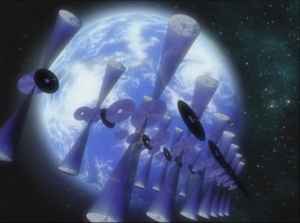
With roots deep in the science fiction genre, it comes as no surprise to hear of the prominence of space exploration and colonization. However, the Gundam series analyzes the implications of living in space in a unique and powerful way. In addition to the technological changes brought about by the transition to outer space, characters in Gundam must often deal with changes to human interactions, society, or physiology in response to the changed environment. This analysis never takes the foreground of any series of Gundam, but remains a steady undercurrent that helps to flesh characters out further, deal with real-world issues, and empowers the plots presented.
For example, in the world of the original series, Mobile Suit Gundam, as well as its direct sequels such as Mobile Suit Zeta Gundam, space exploration has led to a slight divergence in the evolutionary paths of humans. When it’s discovered that some humans living in the colonies have developed heightened senses and almost preternatural abilities to detect other people, governments and paramilitary organizations jump on the opportunity presented to create stronger, more aware soldiers. Yet, despite their eagerness to use these people–few of whom are more than twenty years old when the series begins–few Newtypes are ever seen succeeding in their discipline. This struggle is exemplified by characters such as Amuro Ray, a war hero and recurring protagonist. Despite exemplary military service, his government places Amuro under house arrest for fear of his advanced abilities.
While subtle, the message is not lost. In this case, Gundam uses the science fiction framework to analyze the distrust of older generations when the youth rise to power. In other instances, the relationship of the Earth to space becomes more representative of the first-world to third-world relations, or discussions of the appropriateness of genetic manipulation. Regardless of the subject, Gundam never brings the critical commentary to the forefront, keeping the exploration secondary to the plot development and characterization.
8. Surprisingly Mature Themes
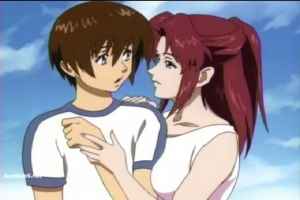
Despite being aired as young adult content, the characters of Gundam tended to age in relation with their audience. As such, many of the series contain at least one scene that seems surprisingly mature, though rarely distasteful. Perhaps the most striking example occurs during Mobile Suit Gundam SEED. After an arduous but failed attempt to rescue stranded civilians, fifteen-year-old Kira Yamato is catatonic and hospitalized for some time. When Fray Alistar, love interest to Kira, visits him at the end of his recovery, Kira is overwhelmed with grief and guilt, and feels separated from all of his friends and loved ones. At this moment, Fray takes advantage of the emotional Kira, and the two have sex. This is more than a one-off shock, however, as the next several episodes show Kira becoming more dependent on Fray while becoming more aggressive and withdrawn from others who care about him. While the themes are heavy, they are relevant to the young adult audience watching the show, exploring issues of emotional abuse in a relationship.
The Gundam series does not shy away from complexity, a benefit when dealing with the coming of age stories of the modern era. In the previous example of Kira and Fray, the negative impact of Fray’s actions becomes clear over time, but Kira attributes a newfound sense of purpose to her presence, while Fray becomes dependent on him as well. This storytelling continues elsewhere, such as when discussing the brainwashed children soldiers of Mobile Suit Gundam Wing who fight for a “good” cause, or other unabashedly mature moments.
7. The Villains Are Heroic (or Vice Versa)
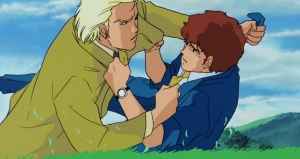
The characters of Gundam rarely hold allegiance to one cause, and Gundam tends not to present conflicts as good versus evil. As such, the line between “hero”and “villain” are nearly nonexistent, and morality is continuously up in the air. The transition between Mobile Suit Gundam to Mobile Suit Zeta Gundam emphasizes this with the most force as Amuro Ray, after turning the tide of the previous war in favor of his government, finds himself aligned with a group of young rebels and side-by-side with his old nemesis, Char Aznable, to overthrow said government. Amuro and Char, despite their continuous rivalry and combat, are capable of cooperating in search of their larger goals. This change is not unbelievable, either. The audience understands both characters see the rebellion as part of a larger search for peace, which overrides any loyalties they have previously professed.
Much the same, the audience is not expected to like every decision the hero makes, nor to sympathize only with them. The character of Ramba Ral has reached popularity as an unwilling but dutiful soldier, despite filling the antagonists role for many of Amuro’s early encounters. He draws the watchers sympathy through his devotion to his men and his integrity, and makes his conflict with Amuro much more than a simple battle. The two take on a complex relationship that echoes a father with a son, while knowing they will have to meet on the battlefield again, prepared to kill one another. Through a rounding, personalizing treatment of his character, Ramba Ral is capable of committing villainous acts without becoming merely a villain.
The Gundam series does not create characters to fill roles, but develops characters as interesting and relevant. Then, when pressed into the brutal situations of the show, the characters are able to exhibit the complexity of real humans, and to discuss difficult issues in meaningful ways. Ramba Ral’s character becomes a way to personalize the other, and demonstrates that people may have many reasons for the actions they choose. Moreover, Ramba Ral is placed in opposition to the young Amuro, who has an undeveloped sense of why he fights, or what it is he fights against, as Ramba Ral’s sensibilities are too keenly developed as a soldier.
6. Beloved Characters Die
A viewer of Gundam should never take happy endings for granted. Considering that creator Yoshiyuki Tomino has earned the moniker “Kill ’em All Tomino,” no character is considered off-limits for death, maiming, or disabling lunacy. While the protagonists tend to survive the events of each series relatively unscathed, there are exceptions even to this. Moreover, it is not uncommon for Gundam to portray the deaths of the innocent, with no man, woman, or child safe from the horrors of war. Especially when a point needs to be made, the protagonists are not immune to failure, and may be unable to stop cataclysmic events and mass destruction.
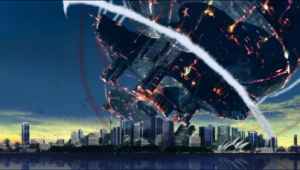
To some, the death and destruction may be wanton, but the Gundam series uses death in important ways. Typically, there are two goals, depending on whether the events are on-screen or off-screen. Off-screen cataclysms tend to occur before the series begins, or in time-lapse periods, and often signal a great change for the human race. Gundam installments tend to initiate the colonization of space with the destruction of humanity, or push life to the brink of extinction to create the conditions necessary for dramatic change during the course of the season. On-screen threats, whether successfully prevented or not, challenge the convictions of the characters. Are they willing to sacrifice anything for the defense of innocent lives, and can they live with failure? However, both sorts reiterate a deeper point, arguing that humanity is unlikely to change until the species experience a world-changing event while simultaneously warning watchers not to wait until it’s too late to change.
In lesser degrees, individual characters are not immune to death either. More striking to note, however, that many characters will characters will die without the heroism or tragedy of other narratives. It tends to be that many serial production will create hype about a character death, especially in regards to dramatic or emotional series. The Gundam series prefers not to approach this tactic, as a reminder that death is ever-present and commonplace in the universes described. Not only does this allow for characters to be more human and vulnerable to failure, but it heightens the suspense for the unsuspecting audience as well, as the watchers know a killing blow could be dealt at any moment.
5. History Is Central to the Story
For Loran Cehack, protagonist of Turn A Gundam, his story begins when he leaves the highly-advanced space civilization for the pre-modern life lived on Earth’s surface. When the world turns bloody, Loran’s salvation comes in the form of the long-buried and ancient White Doll Mobile Suit, known as the Turn A Gundam. Turn A Gundam may be seen as an outlier from other series, considering the heavy focus on the past and the extensive use of period scenes as opposed to standard science fiction conventions. This series still holds many common themes close, however, and a focus on history is not unique. While bringing the historical discussion to the forefront is somewhat non-standard, the undercurrent exists in every series.
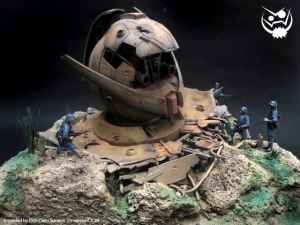
Other series incorporate history in a negative light; that is to say, often characters do not learn from history, failing where Loran succeeds. In the original storyline and all direct sequels, the ever-looming threat of a colony drop–an orbital attack using a still-occupied civilian space colony–replaces real-world superweapons such as nuclear bombs. Before the protagonists enter the story, the audience is informed of the terrible atrocities committed in previous offensives, and the terror that such a thing could happen again. Almost invariably, one or more people attempt to repeat the act, ignoring the lessons of history. It is always with this repeated genocide that the characters find a sense of clarity.
Moreover, it is innate within science fiction to discuss the topic of advancement, but the Gundam series addresses the opposite side of the coin, and wonders about the danger of fleeing from history. In attempting to reach the next stage of human evolution and ideal peace, the characters of After War Gundam X rush to find the newtype known as “DOME.” In a signature Gundam style, the story is not about the failure or success to find this person, but about all of the sacrifices and questionable worth of the quest as a whole. Whether in punishment or reward, numerous series recognize the importance of historical awareness and attempt to create a subcurrent for the audience to appreciate.
4. The Protagonist is the Enemy of the Masses
Setsuna F. Seiei, protagonist of Mobile Suit Gundam 00, challenges the entire planet with war and destruction so great that it must end all other wars. Heero Yuy and his companions of Mobile Suit Gundam Wing find themselves aimless and alone on Earth after they have begun their missions. Loran Cehack is trapped between his heritage and his loyalties, which place him at odds with both. Regardless of the form it takes, many characters in the Gundam series are not heralded as heroes or saviors, but treated as outcasts or outright villains. Sometimes this is of their own violation, sometimes a mistake of their actions, and sometimes completely out of their control. What connects all of these individual instances?

Change is unfavorable, and the change brought about by Gundam protagonists is great in scale, and greater in risk. It is always in taking these risks that brings the public wrath upon their heads. Usually, this occurs because of the character’s unusually fervent beliefs or an inherent difference in the personality or mentality of the character. This individuality then exemplifies itself in an action taken, but need not, as the difference itself is sufficient for being ostracized. Nonetheless, the protagonists continue onward, though Loran may rebel against a part of himself or Setsuna may temper his goals by including others.
Gundam uses this idea to examine the concepts of leadership and individuality. Though many characters are repulsed by the zeal or the mindset of the protagonist, other characters are drawn to them. These characters are not always savory or trustworthy, however, and the protagonist can be challenged in his certainty, such as when Setsuna’s aggressiveness and surety cause his allies to consider him emotionless or psychopathic. Extreme characters may need to reevaluate themselves to better fit the people they lead, or adjust their goals when faced with unintended consequences or unexpected complications. However, no matter how Gundam challenges the notions of leadership, the individuality of the protagonist eventually bubbles to the surface, and their simple honesty and faith remain central to their success.
3. The Prototype Weapon Is Stolen, Repeatedly
Despite a focus on realistic technology and character development, Gundam seems to falter when representing realistic security protocols. Nearly every superweapon or prototype weapon introduced to the franchise is stolen at least once, and often passes hands numerous times due to subterfuge and capture. In fact, several series begin with the protagonist stealing or attempting to steal the titular Gundam, such as After War Gundam X, or Mobile Suit Gundam ZZ. The situation tends to favor the underdogs, as the scrappy protagonists will steal the weapon from the technologically superior governmental forces or paramilitary unit, but characters will often steal Gundams, advanced mobile suits, or other weapons from their allies to use for personal gain.
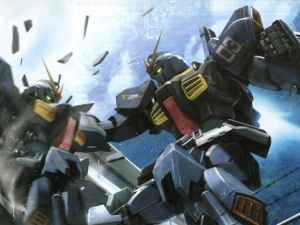
Many times, this is more than a convenient plot device, but a symbolic embodiment. When Amuro Ray, Kamille Bidan, or one of the other protagonists steal the secret weapon of the government, they represent the development of younger generation. Suddenly, the older generation finds the weapons of war they created–the struggles they fought and the power they wielded–forcibly assumed by their children. In the case of these protagonists, they do not steal the Gundams and mobile suits of their own whims, but tend to find themselves in the middle of a battle with only one option for survival: theft and escape.
The symbolism of theft continues when protagonists take the Gundams from their allies to engage in personal battles, or take on risky maneuvers, generally to the great dismay and disparagement of their fellows. The clash between individual values and the good of the group plays out in these endeavors, with mixed results. In the end, though, the Gundam or mobile suit must be returned, and the thief must defend their actions and accept the consequences of the group, regardless of right or wrong and the effects of the theft, a sober interpretation of events.
2. The Protagonist Is Struck by Their Hero
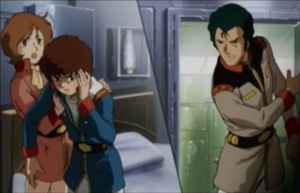
After Amuro Ray has experienced his first real combat, he finds himself unable to return to battle, terrified of what he has already experienced. However, keeping in the running dark morality of the series, his commander, Noa Bright, reminds Amuro of his obligation to the military, and to the people he protects. This reminder came in the form of a well-placed slap to the face, and a beloved meme was born. Perhaps due to the popularity of the original moment, almost every subsequent Gundam installment contains one or more so-called “Bright Slaps” a moment of weakness overcome through the physical violence of a superior officer, father figure, or trusted guardian. This slap has become so ubiquitous in Gundam that tvtropes.org originally named a trope the Bright Slap, and still references the alarming amount of hits the young protagonists tend to take.
These moments achieve a strange poignancy, however, as they advance both plot and character in a dramatic leap. As the protagonists are overcome by the horror they have witnessed, the Bright Slap is meant to bring them back to the forefront of the action. Moreover, this heroic spell is broken, and the protagonists see their idols as just another human, as fearful and uncertain as the protagonists are. In some instances, this spurs a deeper relationship with the protagonist’s hero, and the two bond as fellow humans trapped in a dire situation. Other times, the illusion is broken and the protagonist resents the demystification. Regardless, it is oddly satisfying to watch Noa Bright remind Amuro that crying gets one nowhere.
1. Quality Storytelling
Whether the audience is riding with Kira Yamato through the dark dredges of his soul while he struggles against his enemies and the people he used to believe in, or watching as Amuro Ray and Char Aznable find a strange sympathy in a broken world after their years of conflict, the characters are compelling and real. Watchers laugh as the crew of the Argama laugh, and cry when Loran Cehack must turn his back on either his friends or his faith, and feel the same strange combination of emotions that Heero Yuy did when trapped, wounded, and with only one option left to make sure the enemies did not take him alive.
By taking the many traits listed here, combining them with talent and a passion for meaningful storytelling them, and presenting them in beautiful and emotive style, the Gundam series has created a touching and complex storytelling medium. With worlds just absurd enough to be fantastic but still grounded in hard-hitting reality, the Gundam series is able to address difficult problems in a way that connects with the audience without overwhelming them. By including raw, vulnerable protagonists and supporting characters with mistakes and abuses before them, the audience is able to see the real effects of decisions and interactions.
But, above all else, the Gundam series has always been a coming-of-age tale. Not only does this series portray the maturation struggles of some young adult protagonists, but also the internal conflicts persons of all age can relate to, and the development of the world as a whole. As such, the series also matures unsurprisingly well, ever improving upon the techniques of production and the depth of story. No matter which entry in the series a viewer chooses to begin with, one should always expect an unbelievable performance.
What do you think? Leave a comment.




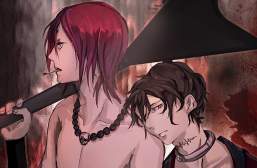

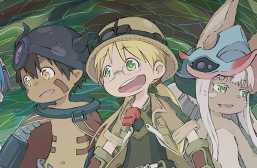
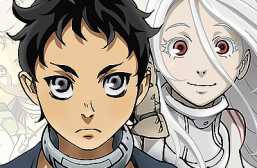
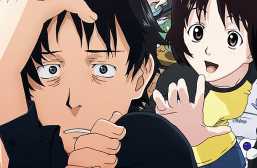
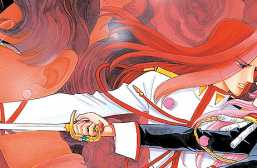
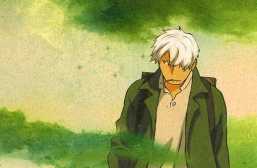
Gundam is not just a great anime, it’s a great work of science fiction in general. Your article really highlights the biggest strengths of this series, and a good way of introducing newcomers to this great show.
Thank you!
It seems that Gundam has fallen somewhat out of the spotlight, despite still deserving to be watched. Just hoping to interest some new fans!
honestly gundam as a whole is just awsome, we can all agree to that, my top 5 gundam series:
1.Gundam 00
2.Gundam Wing
3.MSG: The 08th mobile suit team
4.Chars counter attacjk
5.Gundam Zeta
Turn a Gundam is the best. I am sorry but it was just SO good.
First Gundam didnt get popular at the first broadcast even in Japan because it was too avant-garde at the time. I think its not popular enough in USA yet. But someday it may change.
I have to point out that Gundam while dated must be held into high regard for the advancement of cell animation tech. Also some of the best battle scenes to date, that are constantly referenced.
What I find fascinating about the original Gundam series is that its creator, Yoshiyuki Tomino, managed to integrate commentary on the WWII and Japan’s less than honourable role in it, into a cartoon show meant to sell toys at children. Basically, the Federation was meant to represent America and its allies, the space colonies were the Asian countries and the Principality of Zeon was the Imperial Japan. Later Zeon became a general stand-in for all kinds of extremist ideologies, but that’s how it started. Considering how Japan still has hard time in coming to terms with its past, handling all that in 1979 even through cartoon parallels really took vision and courage.
I myself started watching Gundam from its roots, not from A.C. I’m almost done with all the animated UC works and it just goes to show that even an anime about giant robots blowing each other to hell can still be quite realistic in its representation of mechanics.
Gundam: The Origin manga is a fantastic read, and, being a retelling of the original series, is a great place for people interested in the series to start.
The Gundam world, truly did inspire other great Mecha Anime.
Gundam is Japan’s Star Trek.
I like the deep stories and complex characters.
Personally, I didn’t like Season 2 of 00, and the movie left an even more sour taste in my mouth for the whole 00 series.
As a kid show, I think it does a great job and the Gundam fights are a joy to watch.
What I love about the Gundam series as a whole: the politics. I place UC Gundam at the top. I know I will get a lot of heat for this but I actually like Gundam SEED as well (I hate Destiny however). Gundam Wing, Turn-A Gundam and Gundam 00 are also at the top of my list.
The UC series becomes so complex towards the end of ZZ and the Char’s Counterattack movie, not to mention Unicorn and Victory. It’s very impressive how much continuity the series actually manages to maintain. That puts it at the top of my list, but I totally agree with the rest of your picks!
There’s nothing wrong with being a SEED fan, aslong as you hate Destiny, haha. I place Gundam Wing and Gundam 00 (not the movie though) pretty high up aswell.
yall gotta watch gundam seed destiny
not many of the older gundam fans liked gundam seed or destiny. Not enough robot action, and too much drama. It attracted a lot of fan girls though zeta and 0079 will forever be the fcking best
gundam seed and 00 are the best in my opinion. Unicorn is by far my fav
Great article. Now if only there were talks about the philosophies behind Gundam.
I originally wanted to write about just that, but as I thought about it, there is a wealth of information in each individual series for several articles, let alone the franchise as a whole. I may come back and look at some of my favorite series more specifically later on, but for now the best I could do is touch on some of the overarching themes here.
Seed Destiny was just the worst of all gundam series.
Yeah Gundam Seed was so stupid, I was actually offended when I was watching it.
I love the realism of Gundam series!
Gundam is one of the few anime series I can get into. Except for G Gundam, that concept is silly, yet fun. It’s one of the first shows that my brother and I really bonded on.
wow been 35 years since the first gundam series..hope this will continue on forever
I can’t believe it’s been 35 years already. It should be interesting to see how they celebrate it.
Gundam is really good. It doesn’t take itself very seriously at all, and it’s more of a show that’s trying to have fun. If you want something that takes itself more seriously, Wing is a good one. It hasn’t aged too well in some areas, but it’s overall still a good show. Gundam 00 is also very, but Seed is probably the most flawed of the alternate universe gundams.
My fiance is a long time Gundam fan, loves it,
Gundam Wing was one of the anime series’ that really rooted my interest in Mechs.
The original 1979 Mobile Suit Gundam was truly a landmark show, it truly revolutionize the giant robot genre by portraying giant robots as realistic fighting machines instead of as monsters or super heroes. It also revolutionize the genre by being a character and story driven show. Mobile Suit Gundam was not about giant robots fighting each other but about characters and story.
Cool retrospective!
im not i really big gundam fan or anything that is a mecha anime but this got me interested, nice read!
Moved to Japan recently, and it is a bit nuts how popular Gundam is; while people like to throw around comparisons to Star Wars and/or Star Trek, we really don’t have anything that even compares (though part of that might just be how the Japanese celebrate fandom). It’s very difficult to over-state how entrenched in pop culture it is. It also makes living here as a fan of Gundam most excellent.
Mobile Suit Gundam is my fav anime!
Very happy that mecha stories are having a moment in the spotlight.
Without Gundam, it I doubt we’d have the whole Macross universe or any newer stuff like, Argevollen, Aldnoah Zero, and the Fafner series.
It’s impossible to overestimate the importance of Gundam to the mecha subgenre and Anime as a whole. I often tell people “Gundam did for anime what Casablanca did for movies.”
I’m a huge fan of the Gundam franchise!
One thing that Gundam series seem to specialize in is the feelings and hardship of war and search for peace through fighting. What I like about them is that they often offer very distinct ideological positions towards how to attain peace through different methods of war and fighting.
Then of course there’s giant fighting robots and teenage angst which I probably have a soft spot for haha
Excellent article, well written with a ton of detail. Huge fan of the Gundam series, favourite series has to be Gundam 0083: Stardust Memory, great characters and amazing animation for its time.
I always wanted to get into Gundam. I was just never sure where to start.
The storytelling is usually on point for the original continuity (Mobile Suit, Zeta, ZZ, Char’s Counterattack, Unicorn and assorted materials), but it tends to get bogged down by Tomino’s moodiness. Victory Gundam feels almost impossible to watch and his stint with Zeta is downright brutal compared to his other material. He needs to be grounded by a supervising producer. Had he been, G no Reconguista would have benefited greatly. His work is still wonderful though.
Sieg Zeon! This was a great article, especially how the villains can end up being heroic a lot of the time.
“The Prototype Weapon Is Stolen, Repeatedly”, hahaha, very very apt.
Great dissection of Gundam. I must admit, that I have a preference for the harder Gundam interations (8th MS TEAM, STARDUST MEMORY, Unicorn), over the softer ones (WING and the new Build Fighters Try).
Another newer series, which I feel has capture many of the Gundam aspects, is Knights of Sidonia (ala, no character is safe 🙂 )
This was a fun article, and a good introduction to the franchise. That said, I would question the notion that the franchise leaves morality up in the air and doesn’t have good or evil sides. The war in the original MSG is between the Federation which is at worst a corrupt bureaucracy and Zeon, which murdered half of humanity in the opening days of the war. That Zeon is the bad guy is very clear, despite the presence of Ramba Ral and other sympathetic characters in their ranks, with Gihren being the worst person in the series by far. The same holds true through most other entries in the franchise; while individuals on both sides may be good, one faction is typically far more obviously and blatantly evil than the other.
I have always found Gundam to be an interesting series that I have always wanted to watch, but never had the chance. I have watched some of Wing, Seed and all of 00. I think I want to give it more of a chance now. Great article!
At its core, Gundam is about the people who pilot the machines, not the machines themselves, hence the emphasis in character growth in the best of Gundam series.
Read this article on a whim, and found it funny how true it is. I’ve kept up with various Gundam series’ and never actually took the time see these reoccurring themes (aside from the, generally, believable futuristic technology). Now I’ll likely end up looking for them in each subsequent series I watch.
I love this piece, especially the part about space colony as socio-cultural critique. This is especially exemplified in the latest Gundam Orphan Blood.